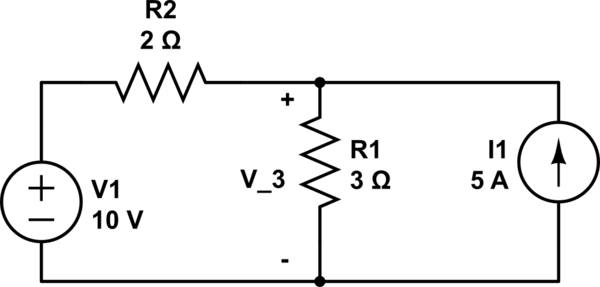The question wants me to calculate the \$V_3\$ value,and the solution is as below.
Solution:
\$V_3=(\frac{10}{2}+5)(2//3)=12V\$

simulate this circuit – Schematic created using CircuitLab
However, here is my thinking. My answer is not the same as solution's, but I don't know where am I wrong. Can anyone tell me where am I wrong?

\$V_3=I_3\times R_1\$,and \$I_3=I_1+I_2=5+(\frac{10}{R_1+R_2})=5+(\frac{10}{2+3})=5+2=7\$,
so \$V_3=I_3\times R_1=7 \times 3=21V\$
Where am I wrong? I think my calculation should be correct, but the my answer is wrong.



